AI Vehicle Classification System for Modern Traffic Management
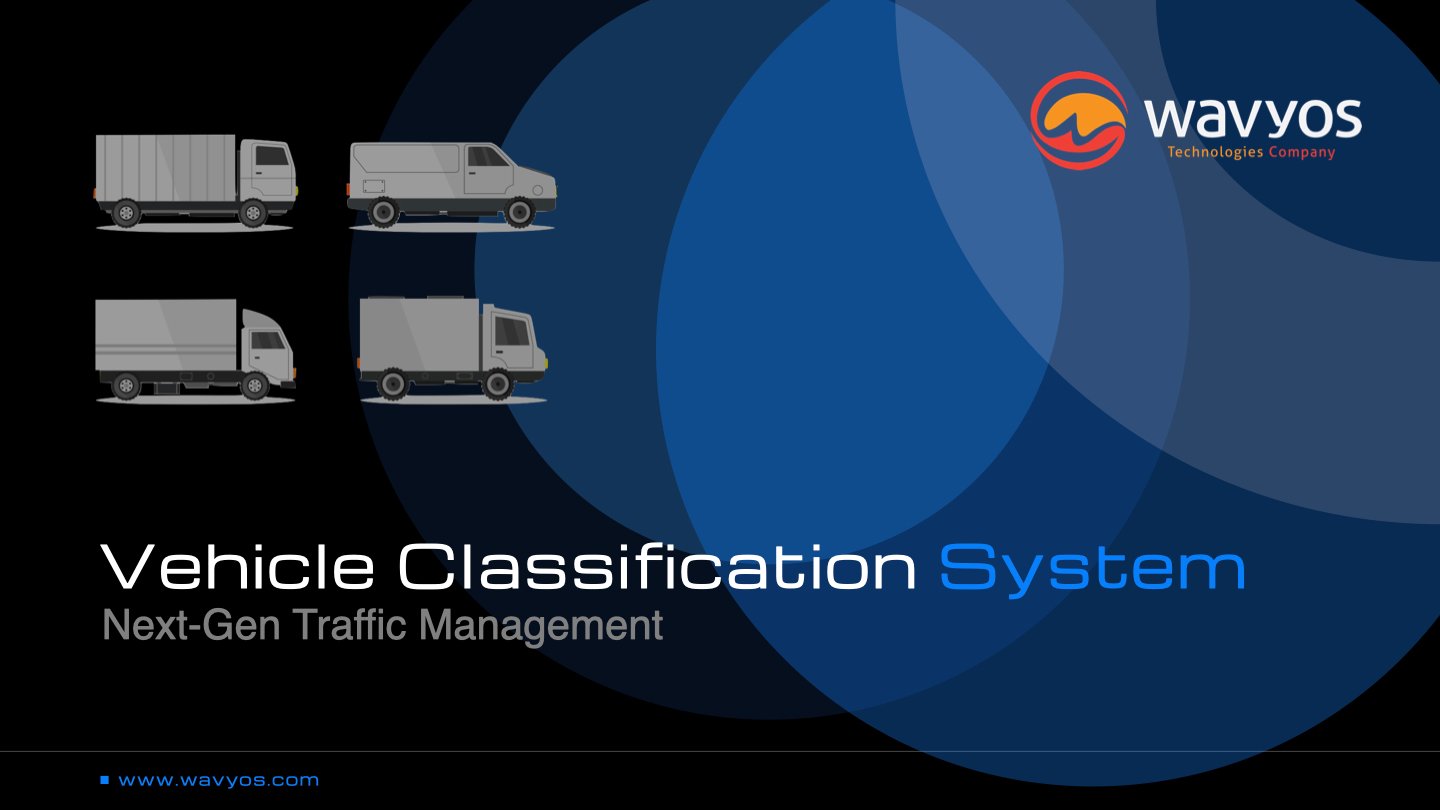
Fully Automated Vehicle Classification & Height Detection: Transforming Traffic Management with Laser Scanner Technology
Managing vehicle traffic with little or no staff may sound unrealistic, but nowadays it’s entirely achievable. Combined with laser scanner technology, AI has been redefining how modern facilities run their traffic management. Whether it is a bustling car park, a port terminal gate, a passenger drop-off zone, a cargo loading area of an industrial campus or an exhibition venue, AI-powered traffic management systems can recognize vehicle types, calculate fees, monitor and give clear guidance on vehicle movements automatically. Compared with manual methods, they deliver a much higher level of accuracy, reliability, safety, and automation. They do not just improve the overall efficiency, they also reduce operational overheads at the same time.
How Laser Scanner Technology Works
Laser scanner technology forms the foundation of advanced vehicle identification applications due to its exceptional versatility and reliability. Unlike camera-based systems that can be affected by lighting conditions, weather, or visual obstructions, laser scanners emit focused light beams that measure distances with millimeter precision regardless of environmental factors.
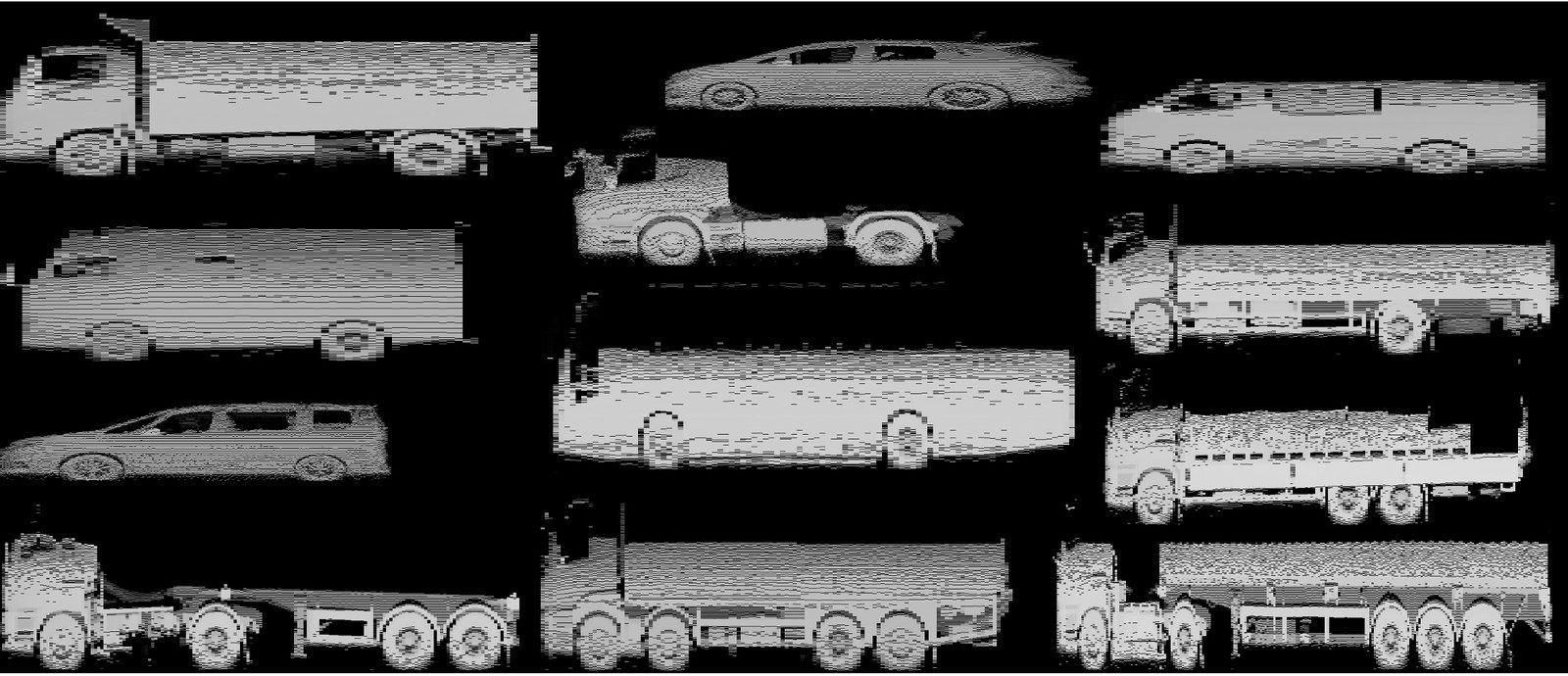
The technology works by sending rapid laser pulses toward objects and measuring the time it takes for the reflection to return. This creates detailed three-dimensional profiles of vehicles passing through monitored areas. Whether it’s bright daylight, complete darkness, heavy rain, or fog, laser scanners maintain consistent performance, making them ideal for 24/7 operations.
The versatility of laser scanners extends to their ability to cover wide areas with minimal hardware requirements. A single unit can monitor multiple lanes or parking spaces simultaneously, reducing installation costs and maintenance needs. Their reliability translates to fewer system failures and minimal downtime, ensuring continuous operation in mission-critical applications.
Reduced Privacy Concern
Laser scanners capture depth/ point-cloud data without high-resolution textures, so faces and license plates are typically not readable. That lowers risk of direct identification compared to RGB video.
Turning Raw Data Into Actionable Information
Artificial intelligence translate raw laser scanner data into human-readable and actionable information. When a vehicle passes through the scan zone, AI analyzes the three-dimensional point cloud, pinpointing key characteristics to classify vehicles with remarkable accuracy. Besides overall dimensions and shape, the system processes multiple parameters simultaneously – wheelbase length, wheel size, axle count, and other distinctive features. Using these unique signatures, it reliably distinguishes passenger cars, SUVs, vans, lorries, trucks, buses, motorcycles, and even specialized vehicles.
These classifications happen in real-time, typically within milliseconds, thus enabling instant decision-making for access control or fee calculation. Machine learning models continually improve their accuracy by learning from each vehicle encounter, adapting to new vehicle models and variations automatically.
Apart from the basic classification, AI also captures precise vehicle dimensions. These exact measurements are crucial for fee calculations and access restrictions. By ensuring dimensional accuracy, the system enables fair billing in tolling and parking and, more importantly, stops oversized vehicles from entering areas with height or clearance restrictions.
Core Applications of Vehicle Classification Systems
By providing accurate, real-time traffic and vehicle data, Vehicle Classification and Height Detection systems enhance roadway efficiency and safety, enable data-driven policymaking, and lower costs across public and private mobility ecosystems. Their core applications include traffic management, dynamic tolling and road pricing, infrastructure planning and design, facility and road use optimization.
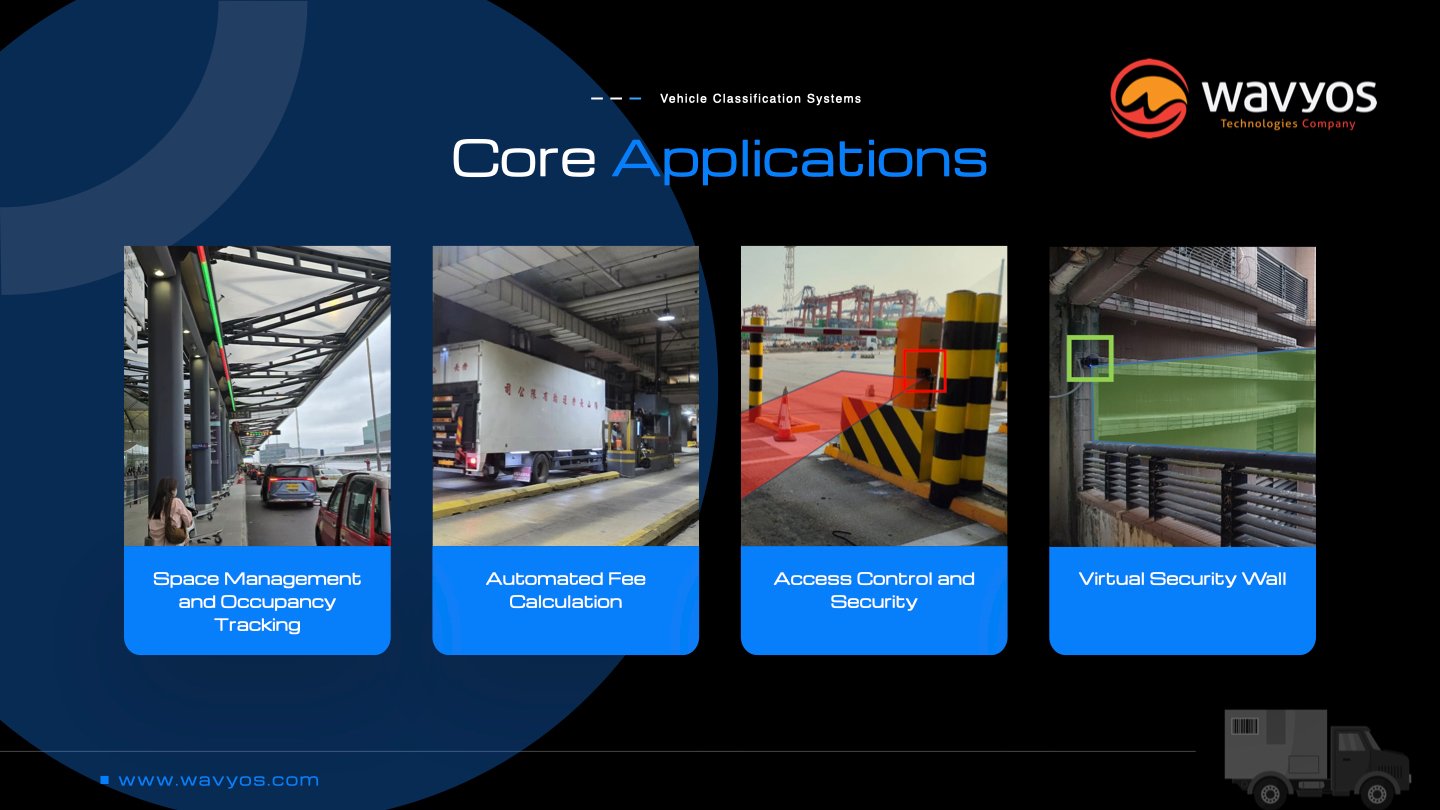
#1 Space Management and Occupancy Tracking
Vehicle classification systems are highly effective at monitoring parking lot occupancy in real-time. The system continuously tracks whether spaces are occupied or vacant, detecting the exact moment a vehicle enters or exits a parking spot. This enables Parking Guidance and Information Systems (PGIS) to provide drivers with instant directions to available spaces, reducing search time and easing congestion.
Facilities can optimize their parking layouts based on actual usage patterns identified by the system too. Historical data reveals peak occupancy times, average parking durations, and space utilization rates, informing decisions about capacity expansion or layout modifications. The technology also detects unauthorized parking or vehicles remaining beyond permitted times, triggering appropriate alerts or enforcement actions.
#2 Automated Fee Calculation
Automated fee calculation is one of the other major advancements. By identifying vehicle types and measuring their dimensions, the system applies the correct fee computation instantly. Toll roads can charge differential rates for passenger cars, commercial trucks, and buses without requiring manual classification or payment handling.
In parking facilities, the system tracks entry and exit times while considering vehicle classification to calculate precise fees. Large vehicles occupying multiple spaces or premium locations can be charged accordingly, ensuring fair pricing based on actual space consumption. This automation eliminates human error in fee calculation and reduces the need for payment booth staff, lowering operational costs while improving revenue accuracy.
#3 Access Control and Security
Vehicle classification applications provide sophisticated access control capabilities that go beyond simple gate operations. Facilities can define rules that automatically deny entry to certain vehicle types. For instance, shopping centers can block delivery trucks during peak customer hours, and facility managers can prevent oversized vehicles from entering car parks or roads with height or length restrictions.
The system enforces these restrictions automatically by measuring vehicle dimensions against predefined thresholds. When a vehicle exceeds height, width, or length limits, the system denies access and triggers alerts, preventing potential damage to infrastructure or vehicles. This automated enforcement ensures consistent application of access policies without requiring constant human supervision.
#4 Virtual Wall Technology for Security
One of the most innovative features of vehicle identification applications is virtual wall technology. Facilities can define invisible perimeter boundaries at any location within the monitored area. These virtual walls act as digital sentries, detecting any vehicle that crosses the designated boundary and triggering immediate security responses.
Security teams use virtual walls to protect restricted zones, monitor perimeter breaches, and establish secure corridors for authorized vehicles. When a vehicle breaches a virtual wall, the system captures detailed information about the vehicle type, dimensions, and exact breach location, providing security personnel with actionable intelligence. Integration with alarm systems, cameras, and security management platforms enables coordinated responses to security events.
Successful Use Cases
Literally there is no need to explain. Organizations implementing vehicle identification applications have substantial operational and financial benefits. Automation reduces labor costs by eliminating the need for manual vehicle classification, ticket issuance, and fee collection. The technology operates continuously without breaks, sick days, or scheduling challenges, ensuring consistent service delivery.
Accuracy improvements translate to better revenue capture and fewer billing disputes. Precise vehicle classification and dimensional measurements ensure fair fee application while automated systems eliminate human errors in data entry or calculation. Enhanced security through virtual walls and access control prevents unauthorized entry, reducing theft, vandalism, and liability risks.
Data-driven decision making becomes possible with comprehensive analytics on vehicle patterns, occupancy rates, and facility usage. This intelligence informs strategic planning for capacity expansion, pricing optimization, and resource allocation. The scalability of laser scanner systems also allows facilities to start with core functionality and expand capabilities as needs grow, protecting initial investments.
Let’s examine two prominent, successful use cases.
Case #1: Kwai Chung Container Terminal (Hong Kong): Four-lane traffic, identify and classify all incoming vehicles and calculate parking fees automatically.
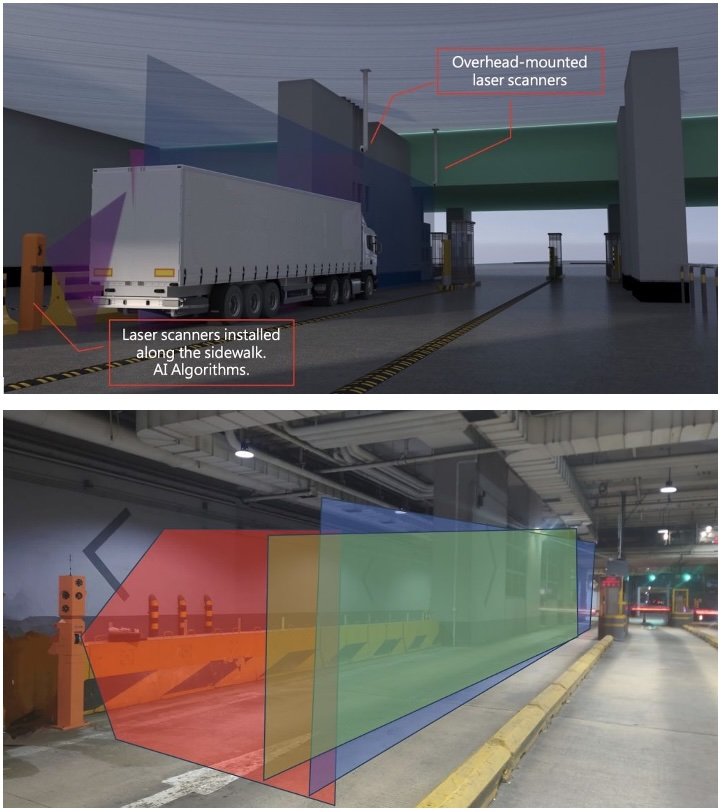
By integrating advanced laser point cloud technology with AI deep-learning algorithms, it can instantly capture and analyze key details such as vehicle type and axles. This not only enhances vehicle management efficiency at the terminal but also greatly shortens vehicle passage time, optimizing overall terminal operations.
In addition to high-speed, efficient recognition, the system offers high reliability and stability. With advanced hardware and software design, it adapts to the complex and changing conditions of terminals, ensuring stable recognition performance in harsh weather and complicated traffic situations. The system also supports multiple data interfaces and communication protocols, enabling easy integration with other terminal management systems to achieve information sharing and collaborative operations.
Case #2: Hong Kong International Airport elevates traveler experience with a Parking Guidance and Information System (PGIS)
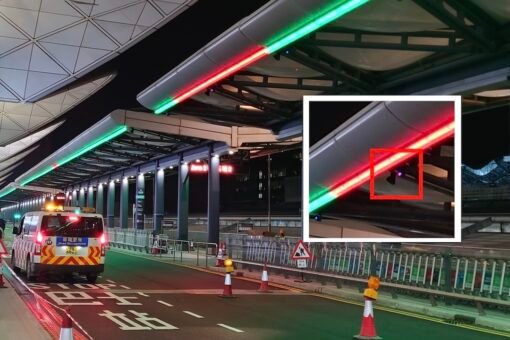
Parking Guidance and Information System (PGIS) is a smart parking solution that monitors real-time space availability and guides drivers to open spots in real time. Using precision laser sensors, the systems detects each bay’s occupancy with high accuracy and reliability in all lighting and weather conditions. High-visibility LED indicators are readable from a distance, directing drivers quickly and clearly to available spaces.
Now drivers can spot an open slot precisely without slowing down to search, improving safety and convenience. Reduced search time also cuts congestion and emissions, streamlining traffic flow and smoothing drop-off.
The plain result is a safer and faster drop-off experience that enhances traveler satisfaction.
Wrap-Up
Vehicle identification applications powered by laser scanner technology and artificial intelligence represent the future of traffic management and security. This combo delivers unmatched accuracy, automation, and versatility across diverse applications. From optimizing parking operations to enhancing facility security through virtual walls, these systems provide measurable value through improved efficiency, reduced costs, and enhanced safety. Are you ready to meet tomorrow’s challenges with today’s intelligent solutions? Contact us today.
Email: sales@wavyos.com
WhatsApp: +852 6099 4407
Other topics that you might be interested in:
- Our services in website design and development and mobile app development.
- How to Transform Your Old App into a Smart Mobile App?
- Beyond Reactive: The Age of AI Customer Service
- What Could Your Business Accomplish With AI Workflows?
- How Does No-Code Development Revolutionize Modern Software Economics?
